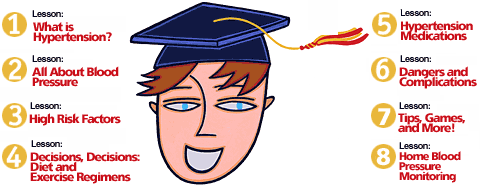



 |
|
|

|
|
Hypertension Lesson 2 - All About Blood Pressure 
Back to Hypertension Channel
Normal blood pressure is not an exact combination of systolic and diastolic pressure readings. Instead, it is a range. In general, a normal range for adults is considered 130/85 mm Hg or less. The table below illustrates the different blood pressure categories.
It is very important to note that your blood pressure goes up and down all through the day. A variety of factors can cause your blood pressure to be temporarily high or low. If you had a strenuous workout earlier in the day, use an arm cuff that is too large, or are a heavy smoker who has gone for a while without a cigarette, the reading may come in lower than your true pressure. Likewise, a temporary high pressure can result from things such as a recent cigarette, nervousness or an arm cuff that is too small. One abnormal reading isn't sufficient to make a diagnosis regarding your cardiovascular health. For this reason, your physician may repeat the test a number of times, ask you to return to the office the following month, or perhaps request that you record your pressure at home if white-coat hypertension is su
Copyright © 2000-2026 savvyHEALTH.com. All rights reserved.
|
|
|
|||||||||||||||||||||||||||||||||||||||||||||
|
About savvyHEALTH | Privacy | Feedback | Home
http://www.savvyHEALTH.com/
All contents copyright © 1999-2026 savvyHEALTH, Inc. All rights reserved.
This internet site provides information of a general nature and is
designed for educational purposes only. If you have any concerns about
your own health, you should always consult
with a physician or other healthcare professional. Please review the Terms of Use before using this site. Your use of the site indicates your agreement to be bound by the Terms of Use.
|
|